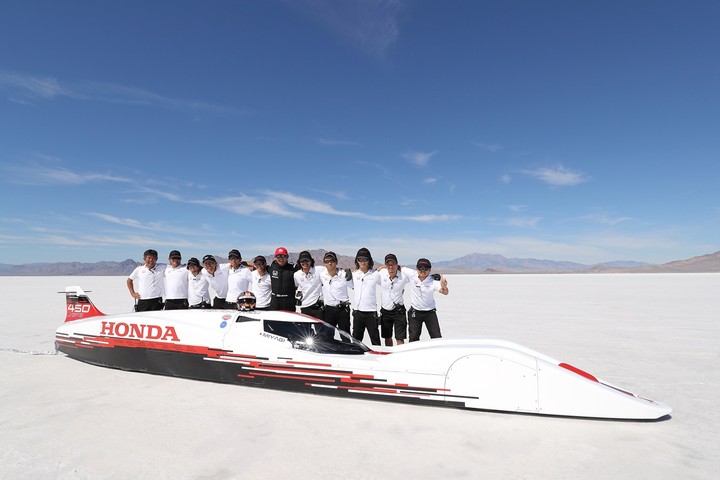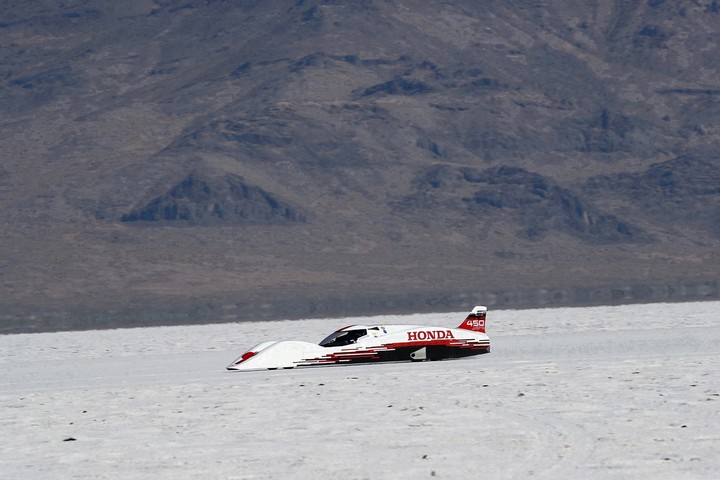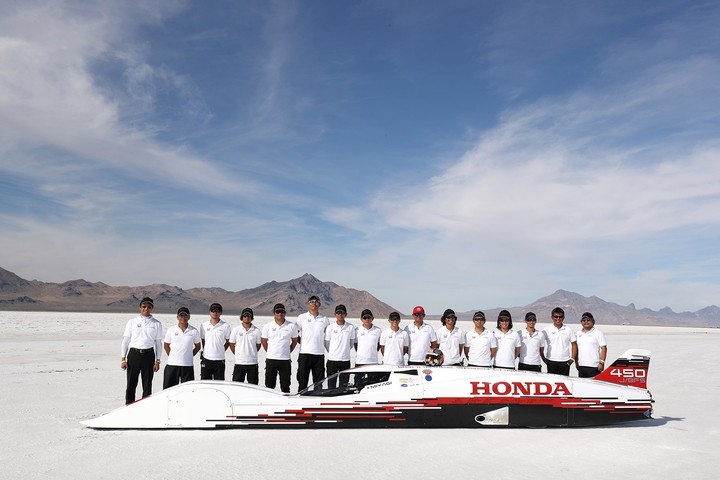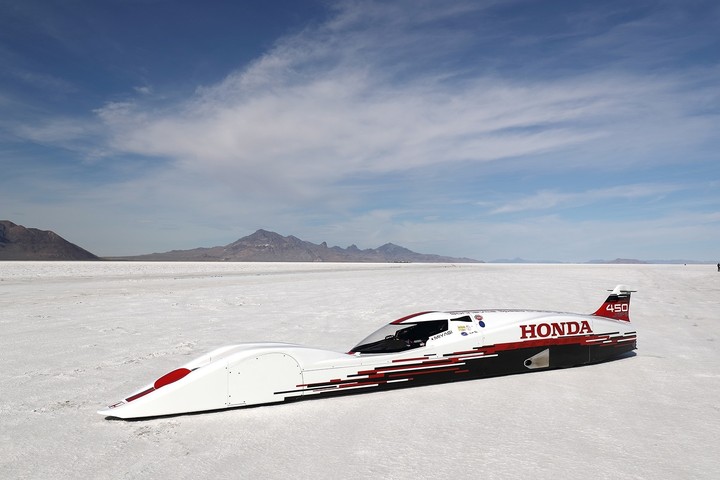
The Bonneville Salt Flats. What remains of the Pleistocene Lake Bonneville, this lake bed has been the testing ground for some of the world’s fastest, quickest, land speed record setting vehicles since 1914. During this year’s Bonneville Speed Week, however, things are a bit different.
Pictured above is what is called the S Dream. A car that has just achieved a top speed of approximately 262 miles an hour, a record that secures the FIA Category-A, Group 1, Class-4 record, besting the previous top flying mile which was done in 2006 by the BAR Honda Formula 1 car. However, that’s not what makes this different, nor is it the fact that the new record was set by a Honda. What makes this different, is that this was done using a three-cylinder turbocharged engine, the kind you’d find in a series of Honda microcars the Japanese would classify as “Kei” cars.
To understand this milestone achievement let’s take a look at the little engine that could; it’s called “Earth Dreams“, and has been designated by Honda engineers as the S07A. It is available in the N-One and N-Box microvans, and the S660 micro-roadster, which are currently being sold in European and Asian markets. A derivative of this engine can also be found in the US, as the powerplant behind the now discontinued Insight. Its output is a mere 63 horsepower, with only 76 lb/ft of torque at the wheels, hardly Ferrari numbers. Through their website, Honda had disclosed some of the modifications done to the engine to make it sturdier, and more able to handle the undisclosed about of horsepower necessary to achieve its record-breaking top speed. This included upgraded pistons, crankshaft, valves, reinforced connecting rods, and the switch from an aluminium lower block to a steel unit. The end result, however, is nothing short of astonishing. A “little engine that could” phenomenon that hasn’t happened since BMW entered their four-cylinder M12 engine into Formula 1 in the late 1970s to the early 1980s, but why do it, some may ask. Why would Honda, who is an otherwise efficient, cost saving, family oriented car company build something so far away from their present image? The answer lies in its history.
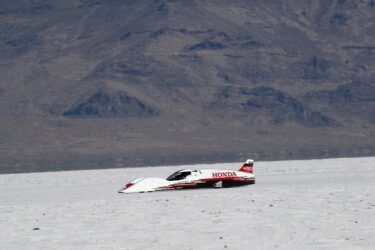
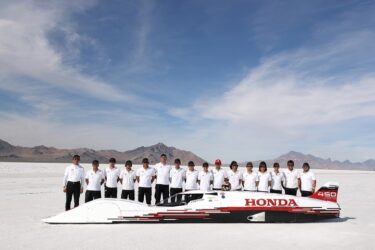
First, let’s look at the features of a modern-day Honda. Safe, practical, as reliable as the Old Faithful, able to carry you and yours in comfort, safety, and fuel efficiency to anywhere from the grocery store, to the mall, to work, or even the nearby flea market that has that mahogany end table that would look really good next to the couch you picked up at IKEA for half the price it was originally listed. They are purpose built but boring, reliable but soulless, and are mostly owned by soccer moms, first-time buyers, and the geriatric at heart. This was hardly the case some 25 years ago. With the development of the first NSX by Shigeru Uehara, and legendary driver Ayrton Senna, Honda vehicles were built as practical people carriers, and with the multitude of available aftermarket performance parts, and custom accessories, they also led another life on either the drag strip, a closed circuit track, or in city streets at night. Honda also took notice, building their own interpretations, hence vehicles such as the Civic Si, Civic and Integra Type R, the Accord SiR and Type R, the Prelude Type S, the RSX Type S, and the various Mugen and Spoon vehicles that followed.
Then came the announcement in 2001. With the last Civic Si rolling off the assembly line, Honda would no longer be producing performance vehicles, and would instead concentrate on safe, practical cars. The romance was over, and Honda, like its other Japanese counterparts, would see a slip in sales as the average American consumer, who demanded a safe, practical vehicle, but with all the extras, and a lot of horsepower, would turn their attention to brands such as Mercedes-Benz, BMW, Audi, and Volkswagen, hence the takeover of the performance market by the Germans during the 2000s until the present day.
Now it seems, Honda is seeking to revamp their image, though it hasn’t been an easy one as witnessed with their latest flop, the CR-Z, which was intended to invoke the nostalgia of the oh-so-good CRX of the 80s and 90s. There are also rumors of the S2000 and the legendary Prelude returning, but with no concrete information to rely on at the moment. All is not lost, however, because we have seen the return of the quintessential NSX, and the all-new, soon to be released Civic Type R. A compact car that boasts one of the fastest lap time records at the Nurburgring, and the first Type R variation of the Civic to arrive on American shores. Will this image overhaul be a success? Will consumers see more exciting, youthful Hondas? Will it be enough to compete against the blitzkrieg of German performance that now dominates our American landscape? Only time will tell, and it is this writer’s opinion that this may be one of the most volatile, uncertain, and exciting times in this automaker’s history.

